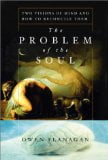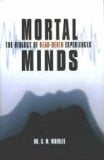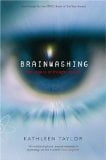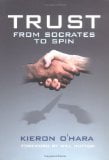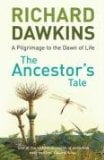This article originally appeared in The Skeptic, Volume 21, Issue 4, from 2008.
Lily Dale is a small town in southwestern New York, about an hour from Buffalo on the wooded shores of Cassadaga Lake. It is a beautiful and serene place dotted with flowers and quaint houses with cats sleeping in windows. It is also home to Lily Dale Assembly, the oldest and largest Spiritualist community in the United States.
Spiritualists are a religious group who believe that people continue to exist even after death. Some Spiritualists claim to be mediums with the ability to contact the dead. A medium, according to the philosophy of Spiritualism, “is sensitive to vibrations from the Spirit World and through whose instrumentality intelligences in that world are able to convey messages and produce the phenomena of Spiritualism” (NSAC, 1994).
Many houses hang shingles offering healing or messages from the dead. Workshops are held each year, drawing speakers on topics such as past-life regression, astrology, spirit communication, angel contact, therapeutic touch, and ESP. Internationally known speakers and self-proclaimed psychics lecture to sell-out crowds.
More than 20,000 people visit Lily Dale each year; some come for the lectures, others for spiritual guidance, and still others for contact with dead loved ones. Guest mediums join the dozen or so permanent resident clairvoyants to offer free daily ‘message services’ to the visitors at a place called Inspiration Stump. The Stump can be found in a clearing a short distance into the woods, with rows of wooden benches facing a large cement block shaped like a giant tree stump. Sunlight trickles through the high trees and onto the filled benches, providing a beautiful and inspiring setting for contacting dead people.
I attended a message service there with my colleagues Joe Nickell and Kevin Christopher. The service began with a prayer, giving thanks for the area and the beauty of nature (the ‘sacred space’) surrounding us. The audience of about 200 people was about 80 percent female, mostly middle-aged, middle class whites. A few black people were present, as well as a handful of teenagers and young adults. After finishing the prayer, the leader reminded everyone to “pay attention because someone else’s message may be our own.”
One by one, six clairvoyant mediums were introduced and got up in front of the stump. Twenty-eight audience members got readings from the mediums over the course of about an hour. The mediums usually began by picking someone out of the crowd and asking, “May I touch with you?” This “touching” was not physical, but simply a Spiritualist term for doing a reading. The mediums also frequently asked to hear their subjects’ voices, saying: “It helps the vibration.”
There have been several good articles written about mediums and their responses, in particular those by Richard Wiseman (Wiseman, Jeffreys, Smith, & Nyman, 1999; Wiseman & O’Keeffe, 2001), Joe Nickell (1998, 2000, 2001), and Peter Greasley (2000). These discuss techniques used by mediums to give the illusion of providing information from the dead (mostly cold reading and clever answering); my intent here is to give the readers a feel for the people, setting, and techniques involved in Spiritualist communication with the dead.
The Readings
I found that the readings that the mediums gave fell into several broad, sometimes overlapping, categories:
1. Banal Responses. These typically gave very general information that said little of substance or that likely apply to most people (e.g., “you are sometimes moody”), or that common sense would suggest (e.g., “Grandpa had health problems”), or words of encouragement (i.e., “Dad says he loves you”). At times, seemingly specific information was given by the medium, such as when the first medium said, “You like to be by water, especially moving water.” Of course, most people like to be by moving water: a waterfall, a beach, a lake, a river, etc. Still water, such as from a puddle or toilet, usually doesn’t stir people’s emotions the way moving water does.
Banal responses such as this are curious because they bring up the question of why, during the rather remarkable experience of actually delivering messages from beyond death, the dead person would bother to bring up such trite information such as that the subject likes water. I hope that if I am ever truly contacted by a loved one from the spirit world, I will get messages of somewhat greater importance.
2. “Fishing Expeditions.” These are responses in the form of questions, designed to elicit a positive identification from the subject (e.g., “do you know anyone with a ‘J’ or ‘G’ in their name?”). Frequently the mediums started out motioning to groups of people, thereby increasing their odds of getting a “hit.” The more people they can apply their information to, the more likely it is that someone will have an uncle named Simon or a cat that died.
3. Incorrect Responses. When the mediums do get specific, these responses are sometimes incorrect (e.g., “you have stomach problems”). In those wrong answers, the mediums frequently went to great – and at times comical – lengths to rationalise why their obviously wrong response was in fact correct.
4. Detailed Responses. At times the mediums described vivid images, for example “a lady played checkers with you” – which was wrong – or “do you have another grandfather who speaks French?” – which was right. For the sake of brevity I have omitted a few of the banal and fishing responses in favour of discussing information that the subjects could verify. In some places I have added my comments, but the reader is invited to read over the responses to make their own judgments.
1. The first medium, a woman from Rochester, New York, told her first subject that: “I see you are a friend of animals…You need to protect your heart more…You help others, but you need to take care of you.” (Banal responses: Most women like animals, and likely everyone can think of a relationship where he or she should have “protected their heart more”; however, each person may interpret the phrase to fit with their past experience.)
She told the second subject about an Uncle Al who wore a suit from the 1950s and a fake diamond ring. When the subject replied that she had no uncle named Al, the medium hedged, “I don’t know if it is your uncle… But he is coming to you because you are in turmoil and will be facing a choice… Go with your heart.” (Banal and detailed but incorrect responses: Most people constantly face some sort of choice in their lives. And why would the spirit of someone else’s Uncle Al appear?)
2. The second medium, a thin blonde woman in her sixties, started out by motioning to the left-hand side of the benches. “Somebody in these first four rows…” she said. “Somebody from out of town? Somebody who is watching your house?” The people in those rows looked at each other with puzzlement for about five seconds. No one fit that description. Luckily for the medium, a black woman sitting eight rows back – about 100 feet way – pointed to her daughter and said, “She was sitting there.” The medium nodded and continued her reading, promising good health. (Apparently the spirits get confused when someone simply gets up and moves. If that’s true, one wonders how the spirits keep track from person to person and group to group.)
She pointed to another subject, a man, saying, “Somebody with glasses… Or going to get glasses… Or needs glasses.” Though this description will fit most people, it apparently meant nothing to the man. Finally the medium moved on, saying, “It has nothing to do with glasses. I am getting colored names.…” (Fishing and detailed but incorrect responses: If the message has “nothing to do with glasses,” why did she repeatedly ask about them?)
“Green or Brown or White?” she then called to the group in front of her. A woman raised her hand and said her last name was White. “Do you have a wedding to get to?” the medium asked. The subject responded yes, and the medium asked if she knew why she was going to the wedding. The subject didn’t respond, so the medium finished up by telling her that she would spend more on the wedding than she had planned to. (Banal and detailed correct responses: The colour question is clever, and almost guaranteed to get positive responses. Not only does it cover anyone named Green, Brown, or White, but possibly, for example, Whyte, Wight, Black, Redd, and the female first name Violet. Possible ‘hits’ might be generated if a deceased loved one was known for favouring any particular colour, or for example for wearing a favourite white suit, hat, or other piece of clothing. The medium was correct about the wedding, though out of a crowd of 200 it’s likely that at least a few had been invited to weddings.)
3. A thin, blonde British woman in her sixties took over, and her first reading was for Joe Nickell. She told Joe that “things will be coming together, looking into the future with ideas of your own… In three to four years you will be successful with your own ideas.” She also mentioned that his father is looking down over him from above and that “the business is the way to go.”
The next subject was told, “I feel you trying to make new decisions… you are a good planner… When you plan well, the outcome is good.” The subject asked about her health, and was told: “If you do as you are told you will be fine.” (Banal response: The woman is told she will be healthy as long as she does what she is told. But what does that really mean? As long as she’s told by whom? Friends? Family? Doctors? If the woman smokes, is overweight, or drives without a seatbelt, she is already not doing what she has been “told” by medical experts. Presumably the medium means to follow her doctor’s advice, which is generally a good idea, but did she really need to contact the dead to get such commonsense advice? Note also that the responsibility is thus placed on the patient: The medium is essentially telling the subject that if she gets sick, it’s her own fault.)
4. A small Asian woman in a red dress began by calling on a teenage girl in the front row. Apparently confirming the information she was getting from the spirit world, she asked, “Are you in high school?” The girl nodded yes. The medium was pleased to confirm this obvious inference and gave sage advice: “Don’t be talking about marriage or relationships… Dating is fine but don’t let boys control your life.” (Banal responses.)
She then asked a man if he was an executive director. He said no. “Do you work in an office?” “No.” “Do you wear a suit at a desk, because I see a lot of paperwork on a desk.” Again the man shook his head. “No.” “Did you start a new job?” “Yes.” After getting one right answer out of four, the medium seemed pleased with her success. “Well, I am right then,” she proclaimed. (Detailed and incorrect responses: She did get one right, but since the medium gave no time frame, the “new job” could have begun weeks or months before.)
A woman was asked if she had a strong open relationship with her mother. “Is she always there for you? Are you going for your master’s [degree]?” The woman said yes, and the medium told her she would do well at her job. (Banal and detailed correct responses.)
5. A blonde woman began with a woman in front of her, saying, “I see a gentleman. His name starts with an ‘H’…” When the woman said she didn’t know anyone who had died whose name began with an ‘H’, the medium tried to salvage her reading: “This is not him, someone like a nephew to you… this person is a symbol of work, he wants to be an entrepreneur.” She said the spirit would guide the woman in her business. She also spoke of “a lady who had hearing difficulty, but never admitted it. She turned her head to hear…” At this the woman enthusiastically agreed, recalling an older person who did that. (Incorrect and banal responses.)
To another woman, the medium said, “I am getting a woman who says she did work in an office. She wants to encourage you in the workplace.” The subject didn’t seem to understand, so the medium explained that the dead woman had had limited career opportunities as a young woman and wanted to encourage the subject to take advantage of women’s social progress. “I sense an old man who had dentures that didn’t fit very well, and that you would walk around the house and see dentures on the tables…” When that description also didn’t match anyone she knew, the medium went on: “Another man, I’m getting a ‘G.’ Greg? Gus? Garth? I’m getting a ‘Gr.’… not a father, someone you wouldn’t have known.” (Incorrect and fishing responses: The subject still didn’t know who the medium was talking about. And why would a spirit of a person unknown to the subject show up at all? If I’m going to the trouble to contact the dead, I’d want my relatives and loved ones sending messages, not some stranger’s spirit giving me information because he’s lonely or bored.)
For the next woman the medium claimed to hear messages from an older woman. “A relative of yours passed with emphysema or cancer… I’m getting a lady, an old-fashioned lady with a checkerboard.” (The subject was puzzled.) “She played checkers with you when you were a little girl… I’m getting an ‘L’… Ellen? Louise? Helen?” Once again, the woman knew no one fitting that name. The medium went on: “Is there a man with a lost limb? A lower leg with a cane?” (The subject shook her head, unable to think of anyone like that.) “He had a problem with his head or emphysema…” The subject finally thought of an old man who had died with a lung problem, and the medium added, “He is showing a move, maybe a real estate move.” (Banal and detailed but incorrect responses.)
6. The last medium, a large woman in denim with her hair in a bun and bright red rimmed glasses, began by calling to a man standing alongside the benches. “Do you know anyone named Joe or Joseph?” The man nodded and replied, “My grandfather.” “Do you have another who speaks French?” “My other grandfather,” the man said, visibly impressed. “You will do more work in a creative field… you are going to get a lot of offers, but you have to pace yourself.” (Fishing and correct responses.)
To an overweight black woman near the back, she asked: “Do you know a Meg or Megra?” The woman said no. “I am seeing diabetes… The person who passed was not good at taking her medicine.” “I have diabetes,” the woman said. (The medium nodded as though the woman had confirmed her information. But notice that the medium implied that the dead person had diabetes, not the subject herself – and overweight African Americans are at very high risk for diabetes.) The medium continued: “It is about your female friend who you are concerned about, and her relationships. You have to get real clear, it is not about love it is about what’s practical… she has to pay attention to her future… make sure about the education, focus on that.” (Banal and fishing responses.)
The final reading went to a man in the very back. “You come from a family of go-for-its,” she said. The man nodded. “I see a lot of problems in the stomach area, maybe stress… you work with structured, legal things… but there is a part of you that is very creative, you have an artistic lean to you. Are there three projects going on now? (“Yes”) Is there something to do in the house? (“Absolutely”) You’ll get it done. Just remember to go out and have fun.” (Banal and detailed correct responses.)
Analysis
The readings relied a lot on the Barnum effect, in which general statements applicable to everyone are thought to apply specifically to one person. This is seen in many sun sign horoscopes, and works in part because people selectively recall instances which fit the trait or characteristic described. For example, if a medium or psychic tells you that you are good with your hands or are a good planner, most people can recall times when that was true of them and agree. But in doing so they ignore the other times when the opposite is also true.
As the crowd left, I overheard a conversation among three women, one of whom had gone to a private session with a medium earlier that day. She was not pleased with her session, claiming it to be “lousy” and “horrible.” The woman told her companions: “She [the medium, confirming her spirit information] asked if I was Irish. I said, ‘No, I’m English,’ and she said, ‘That’s close enough!’” Close enough for an ill-informed Lily Dale Spiritualist perhaps, but not close enough for the subject, who did not accept the medium’s clumsy attempt to validate her incorrect answer.
As this magazine’s readers are well aware, England and Ireland are two very distinct and separate countries and cultures, and the woman was offended at the medium’s response. Surely a deceased English person would feel the same way. The response or message that English and Irish were “close enough” clearly came not from the spirit of a dead English person but a live medium with typical American myopia. More commonly, of course, the messages are of love and comfort, which are sure bets coming from dead loved ones. Many of the responses seemed less like actual messages from the dead than generic advice and reassuring sentiments.
In this regard responses from the dead are similar to responses from Facilitated Communication (Dillon, 1993; Mulick, Jacobson, & Kobe, 1993). In this analogy, the medium represents the facilitator, and the dead represent the autistic child, unable to speak for himself. A simple test was conducted to see where the message was coming from (i.e., was the child really communicating, or was the facilitator generating the messages?). When the child was asked questions that only he knew (but the facilitator didn’t), the child was unresponsive or gave incorrect answers; similarly, when the facilitator and child were shown two pictures, he only responded correctly when the same pictures were also seen by the facilitator.
In short, it was clear that the facilitators were fooling themselves and simply typing out what they thought the child would say. In the same way, (assuming for a moment that contacting the dead is impossible) mediums must make up, guess, or infer what the dead would say to the listener.
All in all, the readings were fascinating. Though clearly non-supernatural techniques were at work in generating responses, it does not necessarily follow that the mediums were being intentionally deceptive. A (perhaps too) charitable explanation is that techniques of cold reading are being used unconsciously. Many psychics and healers genuinely believe they have paranormal powers, and there is no reason to assume that mediums are any different. Mediums may in fact believe that whatever images, messages, and feelings that pop into their heads during spirit communication come not from themselves but from the spirit realm.
As Nickell (2000) has noted, the shift in mediumship from the physical (producing phenomena such as floating spirit trumpets, for example) to the mental has served as an effective way to cloak the medium’s true intentions. Except in rare cases where mediums admit fakery (as M. Lamar Keene did with his book The Psychic Mafia), it is nearly impossible to tell if those claiming psychic powers actually believe in their abilities or not. Regardless of whether the mediums themselves do, many visitors believe in – and act on – guidance from the dead.
References
- Dillon, K. M. (1993). Facilitated communication, autism, and Ouija. Skeptical Inquirer, 17(3), 281-287.
- Greasley, P. (2000). Management of positive and negative responses in a Spiritualist medium consultation. Skeptical Inquirer, 24(5), 45-49.
- Mulick, J. A., Jacobson, J. W., & Kobe, F. H. (1993). Anguished silence and helping hands: Autism and facilitated communication. Skeptical Inquirer, 17(3), 270-280.
- Nickell, J. (1998). Investigating spirit communications. Skeptical Briefs, 9(3), 3.
- Nickell, J. (2000). Hustling heaven. Skeptical Briefs, 10(3), 1-3.
- Nickell, J. (2001). John Edward: Hustling the bereaved. Skeptical Inquirer, 25(6), 19-24.
- NSAC. (1994). Declaration of Principles and Definitions. Pamphlet. Lily Dale, New York: The National Spiritualist Association of Churches.
- Wiseman, R., Jeffreys, C., Smith, M., & Nyman, A. (1999). The psychology of the seance, from experiment to drama. Skeptical Inquirer, 23(2), 30-34.
- Wiseman, R., & O’Keeffe, C. (2001). A critique of Schwartz et al.’s after-death communication studies. Skeptical Inquirer, 25(6), 26-30.
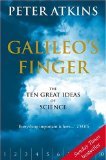 Galileo’s Finger: The Ten Great Ideas of Science
Galileo’s Finger: The Ten Great Ideas of Science
